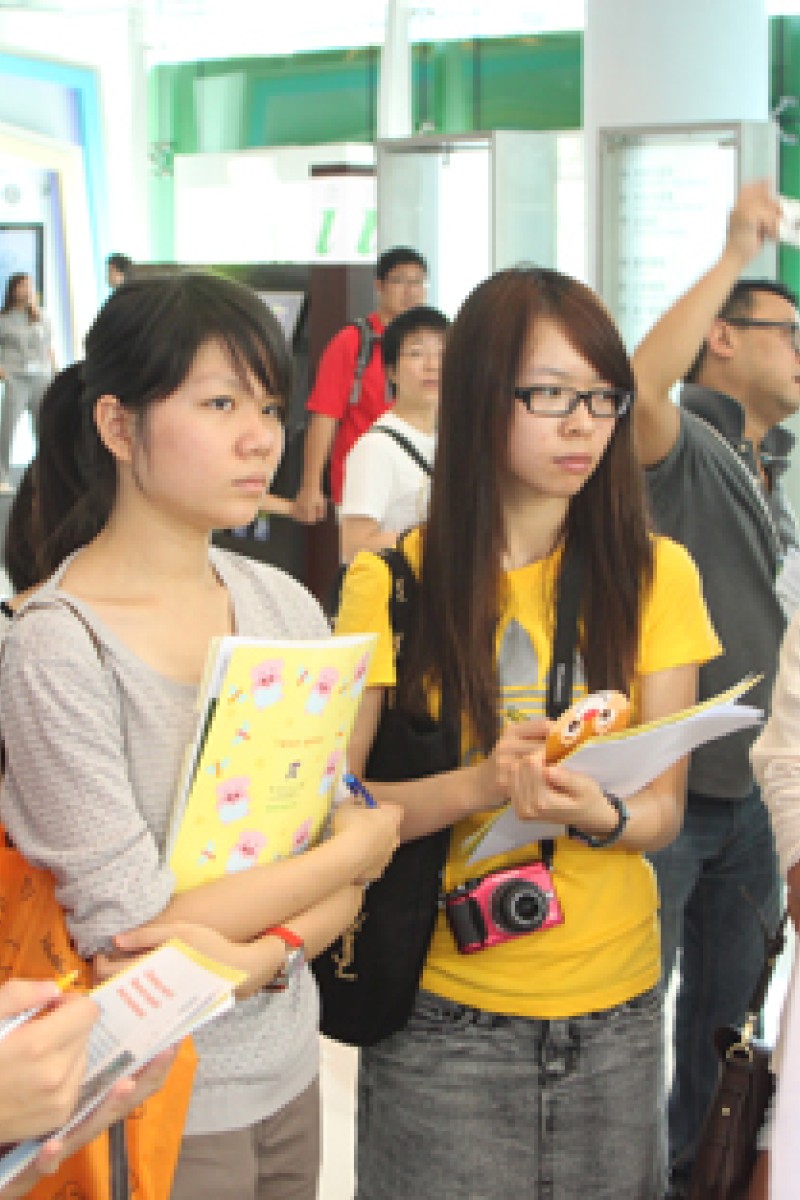
At Hong Kong Science Park, our junior reporters witnessed bots climbing trees, inspecting cables and playing football
 Junior reporters listen to an explanation about how the ibot works.
Junior reporters listen to an explanation about how the ibot works.Ken Cheung
At a booth set up by the Chinese University of Hong Kong, we found the amazing Treebot.
The robot is capable of climbing trees and moving from branch to branch.
It currently holds the title of the world’s lightest, smallest and most flexible tree-climbing robot. The bot can operate come rain or shine, and climb trees of different kinds.
Dr Lam Tin-lun at CUHK co-designed Treebot with a colleague for a master’s degree project.
Their idea is to eventually install add-ons so that Treebot can replace people performing dangerous tasks on trees. This will include installing a camera on Treebot to screen trees’ health.
Winnie Lee
Treebot imitates the behaviour and movements of mammals and insects that live on trees such as squirrels and caterpillars.
It weighs only 600 grams, or the equivalent of four apples.
“With the help of Treebot, we can ensure the safety of workers who are responsible for looking after trees,” Lam told us.
“We also hope it can help develop students’ interests in innovative technology, taking Hong Kong science to a new era.”
Treebot, he added, is a fine example of local scientific achievements.
Samantha Lau
Inspecting electric cables dangling overhead is a daunting and dangerous task. But it no longer has to be.
A group of students from CUHK has invented the ibot to do the chore. These final-year students were inspired by the ability of ants, spiders and other creatures to move from place to place and created a robot that can get to suspension cables with ease.
“It is mechatronics, a field which has great potential for development in Hong Kong,” said Dr Luk Bing-lam, from the university’s Mechanical and Biomedical Engineering Department.
Mechatronics is a merged discipline of mechanics and electronics.
Luk said the ibot would be the answer to the government’s initiative to make building inspections safer.
One of the students, Peter Leung Chi-ko, said that the ibot is user-friendly and light.
It also saves energy by taking regular breaks.
Janet Tam
Three talented students from the Robot Institute of Hong Kong showcased their innovative robots.
Although they are still in primary school, each student already has three to four years’ robot-making experience.
One of their robots simulated the functions of a fire-engine. Like a real fire-engine, it even came with a small collapsible ladder.
Another exhibit was an equilibrium robot. Thanks to a sensor installed in it, the bot keeps good balance when moving about.
The students said they take about a week to create a new robot design. Bots cost about HK$3,000 to HK$4,000 each.
Sonia Tsui
A football game between humans and robots will become reality by 2050. I learned that at a booth set up by the RoboCup Junior Hong Kong Association.
Every year, RoboCup organises competitions for Hong Kong students in three categories: dance, rescue and football. Students have to create their own robots to compete. The winner will represent Hong Kong at a world robot tournament.
On display was Nao, a French robot worth HK$1.3 million that responds to a speaker’s commands.
Leona Chen
The robot known as Nao is real artificial intelligence at work.
Maverick Luk Che-chung, chairman of RoboCup Junior Hong Kong Association, has taught the bot to respond to many types of commands in a similar way to how parents teach their children step by step.
Hopefully, Hong Kong students will help design more hi-tech robots, Maverick said.
Maverick Luk Che-chung resets Nao by patting the bot on its head